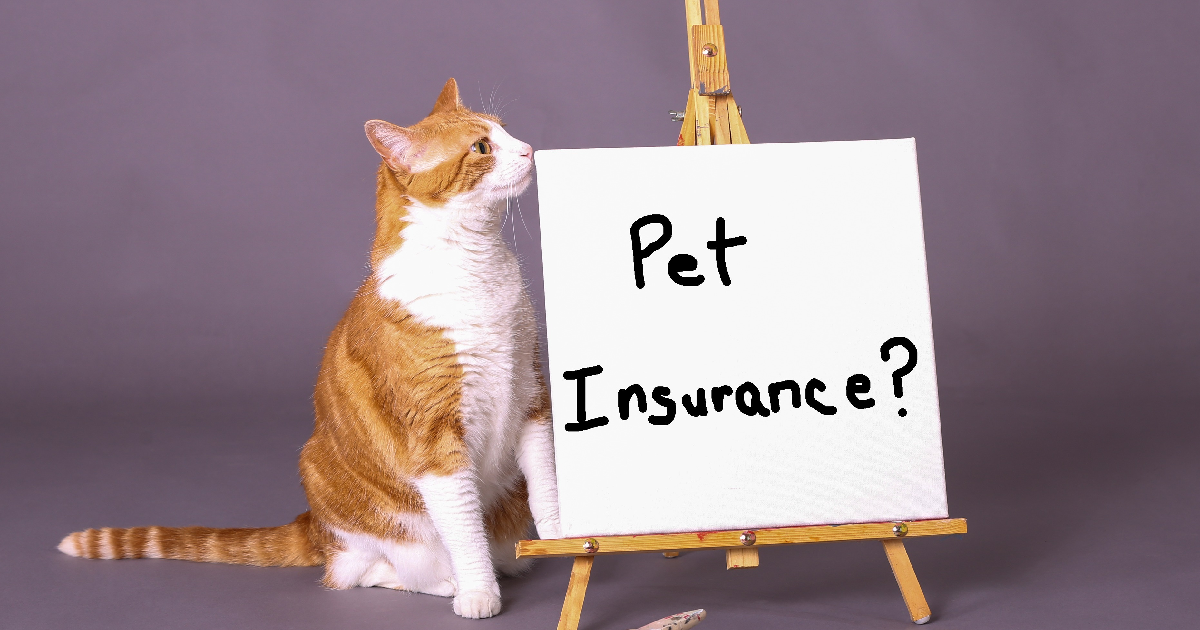Pet Insurance: The Ultimate Guide To Protecting Your Pet and Your Wallet
Pet insurance is a type of health coverage designed to protect pet owners from unexpected veterinary costs. Just like health insurance for people, pet insurance helps cover the costs of treatments, surgeries, medications, and sometimes even wellness visits for cats, dogs, and other pets. With veterinary bills rising every year, having pet insurance means you do not have to choose between your pet’s health and your finances.
Pet insurance policies work on a reimbursement model. You pay the veterinary bill upfront, then submit a claim to your insurer, who reimburses you for covered expenses based on the plan’s terms. This structure makes it easier to afford quality care even when faced with sudden emergencies.
Why Pet Insurance Matters
Pets are family. They get sick, have accidents, and need medical attention just like humans do. Veterinary care has advanced significantly, but this progress comes at a cost. Here is why pet insurance is essential:
- Financial relief during emergencies: A broken leg, swallowed object, or sudden illness can lead to veterinary bills that reach thousands of dollars. Insurance helps cover these costs so you can focus on care, not expenses.
- Long-term health: Chronic conditions like diabetes, arthritis, or heart disease require ongoing treatments. Insurance ensures you can provide consistent care without breaking your budget.
- Peace of mind: Knowing you are financially prepared makes it easier to give your pet the best care possible without hesitation.
- Expanding access to care: With insurance, you can consider advanced procedures like MRI scans, cancer treatments, or specialized surgeries that would otherwise be out of reach.
- Better decision-making: Instead of asking, “Can I afford this?” you can focus on asking, “What treatment is best for my pet?”
Without insurance, even basic treatments can become a heavy financial burden, forcing some owners to make heartbreaking decisions.
Types of Pet Insurance
There are several types of coverage available, and the right one depends on your pet’s needs.
Accident-Only Coverage
This plan covers emergencies caused by accidents such as broken bones, swallowed objects, or injuries from being hit by a car. It is usually cheaper than comprehensive plans but does not cover illnesses. Accident-only coverage is best suited for young, healthy pets or owners who want a safety net for unexpected injuries but are comfortable covering routine care on their own.
Illness Coverage
This covers costs related to illnesses like infections, allergies, or chronic diseases. It is especially useful for pets prone to hereditary conditions or breeds known for certain health issues. Illness coverage can include diagnostic testing, medications, and surgeries. For example, a cat diagnosed with kidney disease or a dog suffering from allergies can receive continuous treatment without draining your savings.
Accident and Illness Coverage
This is the most common and comprehensive plan. It combines coverage for accidents and illnesses, making sure you are protected in almost any scenario. Whether it is an emergency surgery after an accident or a long-term illness requiring multiple vet visits, this plan ensures balanced protection.
Wellness or Preventive Care Coverage
Some insurers offer add-on plans for preventive care like vaccinations, dental cleaning, flea control, and annual checkups. While not strictly necessary, it helps manage regular health expenses and encourages responsible pet ownership. Preventive care is particularly valuable for younger pets, as it establishes a foundation for long-term health.
Comprehensive Plans
These include accident, illness, and wellness coverage. Although more expensive, they offer the broadest protection, ensuring you are never caught off guard by medical bills. For families who want complete security, comprehensive plans provide peace of mind and flexibility.
Benefits of Pet Insurance
Here are the main reasons pet insurance is a smart investment:
- Reduces financial stress during emergencies by covering costly treatments.
- Encourages timely veterinary care since costs are more manageable.
- Provides access to advanced treatments that might otherwise be unaffordable.
- Supports long-term care for chronic conditions that require ongoing attention.
- Lets you budget for your pet’s health more easily with predictable premiums.
- Offers peace of mind for pet owners who travel or live in areas with limited veterinary options.
- Strengthens the bond between owners and pets by removing financial hesitation in treatment decisions.
Common Mistakes with Pet Insurance
Many pet owners misunderstand how policies work. Here are frequent pitfalls:
- Waiting too long: If you wait until your pet develops health problems, those conditions may be considered pre-existing and excluded from coverage.
- Not reading exclusions: Some policies exclude certain hereditary conditions, dental procedures, or behavioral treatments. Always check the fine print before signing up.
- Choosing the cheapest plan: Low premiums may mean limited coverage. If major illnesses or accidents are not included, you may end up paying more out of pocket.
- Forgetting about annual limits: Some plans cap the total payout each year. Make sure it is high enough to cover serious emergencies.
- Ignoring reimbursement rates: Some policies reimburse 70 percent of costs, while others cover up to 90 percent. This difference can significantly affect your out-of-pocket expenses.
How to Choose the Right Pet Insurance
Selecting the right policy depends on your pet’s health, age, and lifestyle. Here are practical tips:
- Assess your pet’s needs: Young and healthy pets may do fine with accident-only coverage, while older pets benefit from comprehensive plans.
- Compare providers: Look at coverage options, reimbursement rates, and claim processes before making a decision.
- Check waiting periods: Most policies have a waiting period before coverage begins. Be aware of these timelines.
- Look for lifetime coverage: Some insurers stop covering pets after a certain age. Choose one that offers lifelong protection.
- Evaluate customer support: Quick claims processing and good customer service make a big difference when emergencies happen.
- Balance cost and coverage: The cheapest option may not provide enough protection, while the most expensive plan might offer more than you actually need.
Pet Insurance and Chronic Conditions
Chronic illnesses like arthritis, diabetes, or kidney disease require ongoing treatment. Comprehensive pet insurance ensures these long-term conditions are covered, reducing the financial strain over time. Without coverage, the cost of monthly medications, blood tests, and follow-up visits can add up quickly. Having insurance in place allows pet owners to manage these conditions consistently and without financial stress.
Pet Insurance and Breed-Specific Issues
Some breeds are prone to particular health issues. For example, bulldogs often face respiratory problems, while German shepherds are at higher risk for hip dysplasia. Pet insurance helps cover the cost of treating these conditions, which might otherwise be excluded if not purchased early in the pet’s life. Early enrollment is crucial for owners of at-risk breeds, as it ensures coverage for hereditary issues before they become pre-existing.
Pet Insurance vs Savings Accounts
Some people wonder if they should just save money instead of buying pet insurance. While savings help, emergencies are unpredictable. A single surgery can wipe out years of savings, while insurance spreads out costs through affordable monthly premiums. Both approaches together offer the strongest safety net, combining financial discipline with structured protection.
Contribution to Financial Planning
Pet insurance should be considered part of your overall financial planning. Pets can live 10 to 20 years, and their healthcare needs grow with age. Insurance ensures that rising costs do not derail your financial stability. It is also valuable for families with multiple pets, as policies can be tailored for each animal. By treating pet insurance as a financial tool, you protect both your household budget and your pet’s long-term health.
Pet Insurance and Emotional Well-Being
Beyond financial protection, pet insurance reduces emotional stress. Pet owners often struggle with guilt and anxiety when they cannot afford treatments. With insurance in place, you gain confidence in your ability to provide proper care, which strengthens the bond between you and your pet. Knowing that financial barriers will not stand in the way allows you to focus on recovery and quality time.
The Future of Pet Insurance
As veterinary medicine evolves, pet insurance is becoming more sophisticated. Some providers now cover alternative therapies such as acupuncture or physiotherapy, while others are expanding coverage for behavioral treatments. The future may also bring more personalized plans tailored to specific breeds, ages, and lifestyles, making pet insurance even more accessible and effective.
Final Thoughts on Pet Insurance
Pet insurance is more than just a backup plan. It is a proactive way to care for your pets and protect your finances. From covering sudden accidents to managing chronic illnesses, it gives you the ability to say yes to necessary treatments without hesitation.
The key is to choose the right policy early, understand what is covered, and make sure it fits your pet’s lifestyle and health risks. By doing so, you secure not only your pet’s well-being but also your peace of mind.



